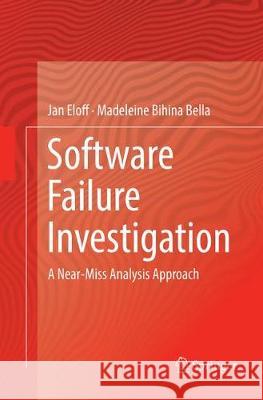Software Failure Investigation: A Near-Miss Analysis Approach » książka
topmenu
Software Failure Investigation: A Near-Miss Analysis Approach
ISBN-13: 9783319870540 / Angielski / Miękka / 2018 / 119 str.
Software Failure Investigation: A Near-Miss Analysis Approach
ISBN-13: 9783319870540 / Angielski / Miękka / 2018 / 119 str.
cena 384,63 zł
(netto: 366,31 VAT: 5%)
Najniższa cena z 30 dni: 383,73 zł
(netto: 366,31 VAT: 5%)
Najniższa cena z 30 dni: 383,73 zł
Termin realizacji zamówienia:
ok. 20 dni roboczych.
ok. 20 dni roboczych.
Darmowa dostawa!
Kategorie:
Kategorie BISAC:
Wydawca:
Springer
Język:
Angielski
ISBN-13:
9783319870540
Rok wydania:
2018
Wydanie:
Softcover Repri
Ilość stron:
119
Oprawa:
Miękka
Wolumenów:
01











